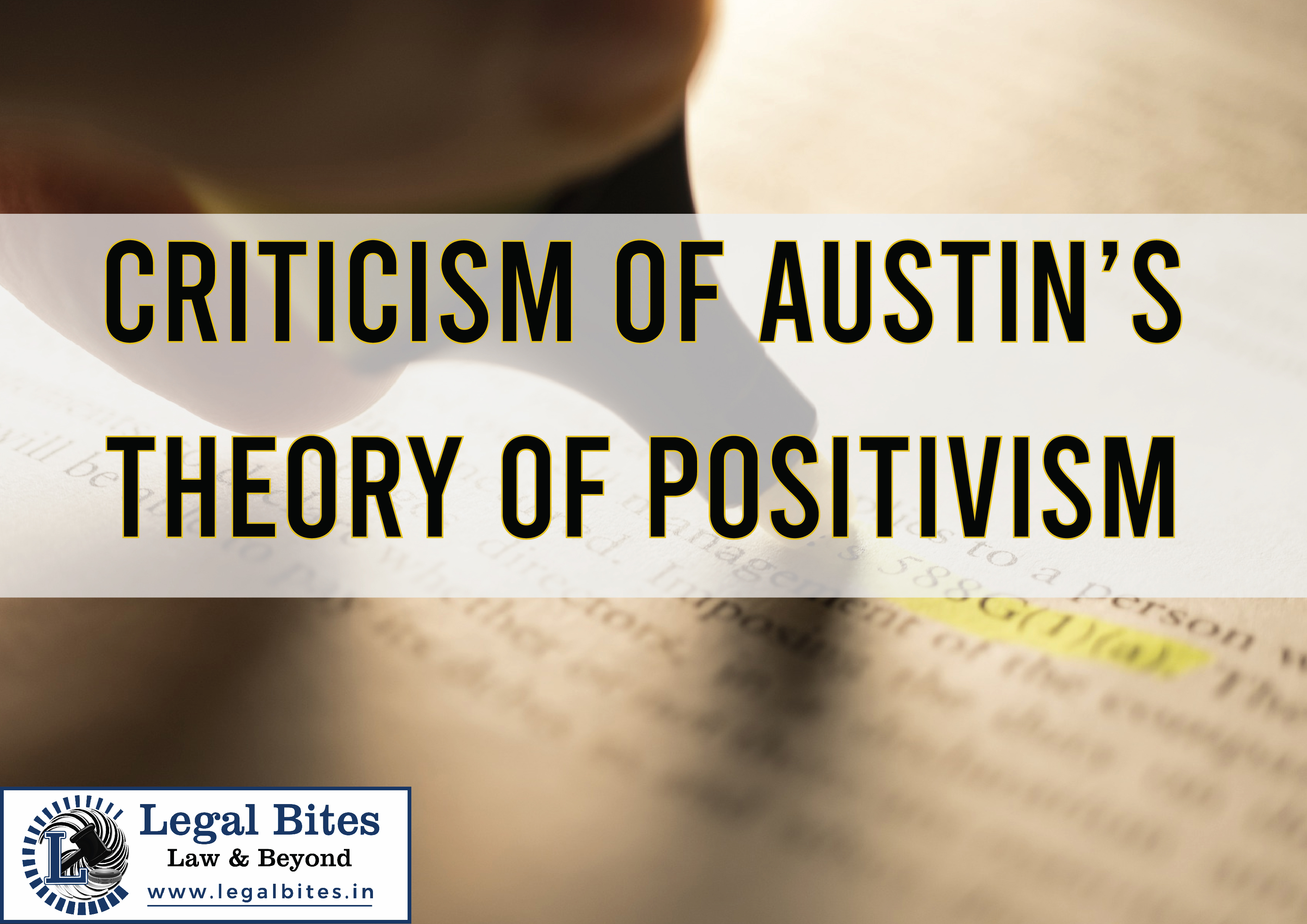Criticism of Austin's Theory of Positivism
Several thinkers and jurists have compared the views of Austin with those of Bentham and have concluded that the latter is more acceptable in modern societies

Criticism of Austin's Theory of Positivism | Overview Bentham's Positivism Austin's Positivism Criticism of Austin's Positivism Universality Identification of a "Commander" Continuity of Law Real Law Procedural Requirements Conclusion This article focuses on the criticism of Austin theory of positivism, Several thinkers and jurists have compared the views of Austin with those of Bentham and have concluded that the latter is more acceptable in modern societies. It is believed...
Criticism of Austin's Theory of Positivism | Overview
- Bentham's Positivism
- Austin's Positivism
- Criticism of Austin's Positivism
- Universality
- Identification of a "Commander"
- Continuity of Law
- Real Law
- Procedural Requirements
- Conclusion
This article focuses on the criticism of Austin theory of positivism, Several thinkers and jurists have compared the views of Austin with those of Bentham and have concluded that the latter is more acceptable in modern societies. It is believed that the positivist movement started at the dawn of the 19th Century. It emerged as a reaction to the theoretical thinking which overemphasised upon the importance of natural law in complete ignorance of the realities of actual law.
The term "positivism" has several meanings. The meaning associated with the founders of British Positivism- Bentham and Austin- regards law as a command. However, there is a marked distinction between both the jurists.
Bentham's Positivism
Jeremy Bentham is regarded as the "Father of Jurisprudence" and John Austin is said to be his disciple. Austin's imperative theory of law, which stresses upon the elements of "sovereignty" and "command" in law, has been derived from that of Bentham. However, Bentham advocates the same with far more subtlety and flexibility than Austin. Unlike Austin, Bentham recognized the fact that the aspects of "sovereign" and "command" in law are subjected to the factors of social desirability and logical necessity.
While Austin's "sovereign" is unlimited and indivisible, Bentham accepts limited and partial sovereignty. This is so because Bentham was mindful of the various complexities that prevail in modern societies. Moreover, Bentham's view on legal sanctions is far more liberal than that of Austin. According to him, sanctions need not necessarily be legal. A sovereign's command may even be backed by moral or religious sanctions. It is, therefore, opined by Lord Lloyd that Bentham's imperative theory "steers away from a number of pitfalls into which Austin fell."
Austin's Positivism
John Austin known as "Father of English Jurisprudence" served in the Armed Forces before joining the University of London as a Professor of Jurisprudence. It is opined by various thinkers that his idea of the law being a "command" essentially emanates from his army background. He disregarded the various ideals of justice present in the definitions of law and substituted it with the idea of law being the command of the sovereign.
He divided all laws into two types:
- Laws "properly so-called"- These laws direct or indirect commands of a politically superior authority.
- Laws "improperly so-called"- These laws do not flow from any determinate source are neither directly nor indirectly formulated by a political superior.
He identified four elements that are present in Positive Law-
- Command
- Sanction
- Duty
- Sovereignty
Criticism of Austin's Positivism
Austin's idea of positivism has been criticised on the following grounds:
1. Universality
Austin's definition of law as a command is not universal. It applies to only certain laws such as criminal law and ignores a major portion of law which defines certain rights for the people and empowers them. Such laws neither command nor forbid for the commission or omission of any act. Law of contract and Property laws are examples of such a law.
2. Identification of a "Commander"
Austin has referred to the commander in a personal sense. It suggests that the commands are given by an individual who is politically superior. In a modern State, it is difficult to identify such a "personal commander" due to the doctrine of separation of powers and the emergence of the "legislature".
3. Continuity of Law
Austin's understanding of commands is that the commands are given by one particular political authority to one political recipient on one particular occasion. Thus, the law is enforceable so long as the political superior, who formulated the law, is alive. Its further continuance is subject to the will of the succeeding political superior. This cannot be said to be true in a modern State following the principles of constitutionalism. In such a State, only those laws may be repealed which have been authorised by the Constitution.
4. Real Law
Real law, which refers to the judge-made law, cannot be said to be a law "properly so-called" based on the parameters provided by Austin. However, this cannot be said to be true in the modern era. A significant part of several modern legal systems comprises of judge-made law or real law.
5. Procedural Requirements
Today, even a politically superior authority has to follow a set procedure in order to formulate a law. All statements and wishes are not identified as a "command" or a law. It seems that Austin has chosen to ignore this particular aspect of modern societies and States.
Conclusion
Several thinkers and jurists have compared the views of Austin with those of Bentham and have concluded that the latter is more acceptable in modern societies. Austin's idea of positive law and theory of positivism has been subjected to a significant amount of criticism and its applicability and relevance have been ruled out by modern societies. It has, nevertheless, led to the emergence of many important theories on analytical legal positivism.
References
- V. D. Mahajan, 'Jurisprudence and Legal Theory', Fifth Edition, Eastern Book Company.
- W. Friedmann, 'Legal Theory', Fifth Edition, Sweet & Maxwell (South Asian Edition).


